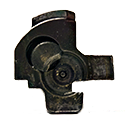|
Thanks, I hadn't seen this before. I'll give it another try.
|
|
|
|

|
| # ? May 13, 2024 22:25 |
|
Sometimes it just doesnt work either. If your seal is cracked or missing a chunk of its mating surface, its not gonna work. I seal mate-d my old goldwing and it worked great for a couple weeks then just puked its fork oil everywhere, I assume because the seal physically failed. For just grime in the seal though, they're great
|
|
|
|
These things are loud as balls but drat they sound good https://www.youtube.com/watch?v=c0bLwl_S2M4
|
|
|
|
TotalLossBrain posted:Thanks, I hadn't seen this before. I'll give it another try. WP forks are easy to work on and SKF makes seals that are better than OEM if the oil seal is hosed. RMATV has several videos on seal replacing that are helpful if the seal doctor / mate doesnít work
|
|
|
|
Yeah it didn't seem to be too difficult of a job. I've done it a couple of times now and even bought the couple of special tools required (are they?) and also have the WP manual for that fork.
|
|
|
|
I'll say, I didn't think my forks were that bad and I kept cleaning the seals but still got leaks. When I finally put new bushings, oil and seals, it was shocking how gross the oil was as it was filled with dirty water. My forks felt 100% different, so much better.
|
|
|
|
POs never change the fork oil. I try to change mine every 2 years if a leak does not happen before that. It really helps even on pretty low cost forks.
|
|
|
|
Renaissance Robot posted:These things are loud as balls but drat they sound good Agreed! Linking the "before" for comparison
|
|
|
|
Today I applied more boot rubber to the exhaust on my ride.
|
|
|
|
Supradog posted:POs never change the fork oil. I try to change mine every 2 years if a leak does not happen before that. It really helps even on pretty low cost forks. I want to get mine swapped out with heavier oil soon anyway so will probably find a shop to do it since I don't trust myself with tearing down major components.
|
|
|
|
It is the norm, the rule of thumb is every 2-3 years, heavier fork oil won't solve whatever problem you have and will probably make the bike worse overall.
|
|
|
|
|
Doesnít heavier oil increase the low-speed damping? Or does it only lower the speed at which you run into hydro lock? If you go to a heavier weight do you need to adjust the orifice size to match to get any intended effect?
|
|
|
|
The problem with just making the oil heavier is it makes all the damping slower. So even in the best case scenario of you correctly identifying the problem and that problem being insufficient low speed damping, you will also get slower high speed damping and slower rebound, which will gently caress up the bike in a whole bunch of ways. It is just a rubbish way of solving a problem, it's like trying to fix handling issues by changing wheel diameter or something. 9/10 times when someone wants thicker fork oil they are either not identifying the problem correctly or just suck at riding.
|
|
|
|
|
Fork oil interval is rarely mentioned on most bikes service manuals. Itís just a thing that is there and needs to be replaced if the seals leaks and are replaced. In actual practice itís a wear item that should be changed on usage based interval, ie engine run time or mileage. As I buy old bikes I really really notice flushing that ancient poo poo out. To change fork oil yourself the only real special tool you need is a front lifter or a centre lifter. On old bikes you can remove weight from the front and drain the oil at the fork drain screws and not release the stanchions from the triple tree at all. Just refill a little new oil from the top plug, agitate and re drain. Refill with the correct height, volume and weight of fork oil(this is in the manual). On modern bikes there may be no drain screw so you need dismantle the front more, removing brake calipers, front fenders and brake line stays and actually upended the dampers to drain it. Even on new bikes this is not complicated. If you have the lifter and have like changed oil or brake pads on the bike this is a natural next step. Itís NOT rocket science. You most likely donít need heavier oil if the bike is 5+ years old, just new oil.
|
|
|
|
On a cartridge fork you'll really struggle to do it on the bike because oil level is measured with the spring out. Of course you can just measure the quantity that comes out and put in the same amount but you'll inevitably have some old stuff trapped in there to throw things off.
|
|
|
|
|
On that note, with normal street riding with a normal bumbling idiot like me. How big a discrepancy would you actually need on oil level between the forks to actually notice it?
|
|
|
|
Idk that really depends on you. Personally I can detect even 30-40ml overly high level as it feels super harsh. Lower level tends to sneak up on you a bit more but you do notice the fork feeling a bit loose. Also depends on a shitload of other factors like fork design, spring rate, jommetry, fork stroke etc. You'd have to do some back to back tests to answer that tbh.
|
|
|
|
|
Thanks, I will look into the process more on my bike, it's pretty easy to get to most things maintenance, although again I don't trust myself around most of the sensitive innards yet.Slavvy posted:9/10 times when someone wants thicker fork oil they are either not identifying the problem correctly or just suck at riding. There's no real problem, just heard at some point that it can be a cheap way to stiffen up front suspension, since I was looking into getting the fork oil changed out anyway since the bike is over 2 years old. The front stock forks are fairly soft and not adjustable, I balk at dumping money into suspension upgrades on a $5,000 bike I'm still too slow to take advantage of yet anyway! Glad I asked, I'll leave it alone as it's not an issue and sounds like it could just complicate things, I'll just flush and replace with the stock 10w when it's time/I get around to it. Supradog posted:Fork oil interval is rarely mentioned on most bikes service manuals. Itís just a thing that is there and needs to be replaced if the seals leaks and are replaced. In actual practice itís a wear item that should be changed on usage based interval, ie engine run time or mileage. As I buy old bikes I really really notice flushing that ancient poo poo out.
|
|
|
RightClickSaveAs posted:...stiffen up front suspension... forks are fairly soft... Yeah just put the stock oil grade in. Your wording here is a dead giveaway that you've got a ways to go with your riding and the bike is not even close to holding you back. Try to isolate the corner into individual phases of upright braking, entry, mid corner and exit. This will start you on the road to understanding what you're actually trying to do and where the bike helps you or doesn't.
|
|
|
|
|
A modern, well built, undamaged, not worn to poo poo hydraulic damper is basically a closed system, and there's no real reason to change the oil at regular intervals. That's why they don't put an interval in the service manual. How often do you change the oil in the dampers on your car? The schedule is basically if your dampening has gone to poo poo, something is broken, so fix that and then replace the fluid or replace the forks if that's what's broken.
|
|
|
|
Slavvy posted:Yeah just put the stock oil grade in. Your wording here is a dead giveaway that you've got a ways to go with your riding and the bike is not even close to holding you back. Try to isolate the corner into individual phases of upright braking, entry, mid corner and exit. This will start you on the road to understanding what you're actually trying to do and where the bike helps you or doesn't. Finger Prince posted:A modern, well built, undamaged, not worn to poo poo hydraulic damper is basically a closed system, and there's no real reason to change the oil at regular intervals. That's why they don't put an interval in the service manual. How often do you change the oil in the dampers on your car? I think you change the oil out of a fork (or shock, if serviceable) because, after time, there are contaminants (eg metal) in the oil that can interfere with the valve shims.
|
|
|
Finger Prince posted:A modern, well built, undamaged, not worn to poo poo hydraulic damper is basically a closed system, and there's no real reason to change the oil at regular intervals. That's why they don't put an interval in the service manual. How often do you change the oil in the dampers on your car? No, this is hilariously wrong. 1. The fork is not sealed, air and therefore moisture is routinely sucked in during normal operation. This is the reason dirt bikes come with air bleeder screws, they pump so quickly that the air build up inside can happen over just one ride and noticably change fork response 2. The graphite coated bushes in the fork deteriorate with normal operation, this is why heavily used fork oil is a grey sludge 3. The dampers in your car and in the back of your bike contain pressurized nitrogen in order to prevent the above problems 4. The fork oil suffers from shear just the same as gear oil, even in the absence of any contamination the molecular chains are broken up and lubrication properties are reduced 5. The dampers in your car are optimal for about 4-5 years before they no longer perform like they're meant to, you just don't notice it, ditto with your rear shock. Car shocks are also permanently sealed so you can't change the damping oil even if you wanted to
|
|
|
|
Toe Rag posted:Also, if you're not routinely bottoming out the fork, do you really need to make it stiffer? I have a small zip-tie around my fork for a visual gauge. As far as I know you want the fork sitting relatively deep in its stroke when entering a corner. If that zip tie is consistently at the bottom of the stroke then you can think about stiffening up (assuming you're doing everything else correctly). 'Stiffer' isn't a thing that exists on bikes, only in your pants. If you are routinely bottoming your fork and aren't riding like a caveman then yeah, you need to increase front preload or spring rate depending on which gives the desired result while keeping the bike's geometry in the right zone ie you might solve the problem with preload but this could make that bike ride really high in the front when you aren't heavily loading the fork, leading to issues in other parts of the corner. Understanding the corner and how to ride comes first. Once you have that down it becomes pretty clear what needs improving, if anything.
|
|
|
|
|
Finger Prince posted:A modern, well built, undamaged, not worn to poo poo hydraulic damper is basically a closed system, and there's no real reason to change the oil at regular intervals. That's why they don't put an interval in the service manual. How often do you change the oil in the dampers on your car? All my dirt bikes have service intervals for the fork oil listed in their manuals
|
|
|
|
Slavvy posted:No, this is hilariously wrong. Thanks for correcting my shitpost, I was exactly thinking of nitrogen pressurized shocks and didn't realize that's not how the front ones are built.
|
|
|
|
Even if they were the oil would still deteriorate. Rear shocks with a nitrogen reservoir routinely get rebuilt every race meeting in professional teams because the deterioration is so rapid. Obviously road shocks are built to much lower expectations and function with far less finesse but the problem still exists; if you could ride two identical bikes with identical settings, but one has a shock with 30,000km, you would probably notice the difference. Heat and friction don't stop existing when you get cavitation and air ingress out of the picture, the mechanical parts and oil itself will always wear, it just matters more in some situations than others eg I don't know of anyone changing their power steering fluid as routine maintenance but it deteriorates nonetheless, it's just not a relevant amount of deterioration.
|
|
|
|
|
Slavvy posted:Even if they were the oil would still deteriorate. Rear shocks with a nitrogen reservoir routinely get rebuilt every race meeting in professional teams because the deterioration is so rapid. Obviously road shocks are built to much lower expectations and function with far less finesse but the problem still exists; if you could ride two identical bikes with identical settings, but one has a shock with 30,000km, you would probably notice the difference. Yeah, I don't mean it like "lifetime fluid" or something, just an "on condition" inspection. You don't do it as a matter of routine maintenance, but if someone comes in complaining of a spongy or harsh shock or something, you check and maybe replace the fluid. It might take one person 8 months to get to that state, it might take another person 5 years. If the same guy comes back 8 months later and the oil is hosed again, something is probably broken.
|
|
|
|
Post your fork oil
|
|
|
|
|
This is timely as the forks on my 919 desperately need attention. Before going down the upgrade rabbit hole I just want to refresh them and see how they feel. In terms of parts to replace, it seems like I should replace the dust seals/boots, oil obviously, and bushings. Anything else while I'm in there? Looks like there are two bushings per fork, #8 and 9 here: https://www.revzilla.com/oem/honda/2006-honda-cb900f-919/front-fork-04-?submodel=cb900fa-919
|
|
|
|
Remy Marathe posted:Agreed! Linking the "before" for comparison Took it out for a shakedown this afternoon and can confirm the initial impression of "loud as balls" is accurate. If anything they actually pop more on decel than my broke rear end old pipes did, and strongly enough that I can even feel it through my feet; at least now it's intentional though  Honestly I will kind of miss the old whisper quiet mufflers (back when they actually were); I think the sewing machine noise of the valve train is really cool, and with the stock system that's literally all you can hear while moving.
|
|
|
opengl128 posted:This is timely as the forks on my 919 desperately need attention. You only need to do the bushings if they're obviously worn but if you've got the money just go ahead and do it. Not much else going on in there. If you want to be extra perfect, have a look at a chart like this to make sure whatever you're buying is the same viscosity as whatever Honda say to put in in the manual because the SAE weight numbers on the packet mean nothing. You also might want to replace the crush washer on the bottom bolt but again, optional.
|
|
|
|
|
Ooh nice chart. It also dooms me since I buy local Oem sae spec poo poo. Why is fork oil so ehh ungoverned vs engine oil? In my naÔvetť I assume engine oil has more defined specifications in more dimensions than fork oil.
|
|
|
|
I think it's mostly cause having the wrong fork oil doesn't gently caress up your forks, and forks have no effect on emissions or fuel consumption. Gear oil is the same sort of story but to a lesser extent cause a gearbox is a gearbox most of the time.
|
|
|
|
|
 When replacing the tank petcock seal, i discovered a rusty spot where the mounting bracket was welded to the tank. It still was superficial rust, but definitely of the kind that when left untreated for 5 years, it'll cause a pinhole leak. So i slapped some primer on it. I'll paint it black later, even though it's in an invisible spot.
|
|
|
|
More weird Rex poo poo this afternoon. Not an exact copy of the last thing, but close. I'm going to include all observations as I don't intuitively know what's relevant. Last time, I filled it up with $5 worth of gas - about 2.5 L that day - switched the petcock back to regular from reserve, and at the next stoplight the idle promptly plummeted and I had a bastard of a time getting started again. Once I did, idle was rough like I was down a cylinder or more, but it came back to normal operation over the course of limping home. --- Today, riding around the city, I had a sense that the bike was a little hotter than normal. Odd because today was relatively cool compared to the last month and a half. I was downtown, and I noticed at lights the idle had become rough-sounding - gargly like a Subaru instead of its usual mild lumpiness - and threatening to stall out. Similar to last time above, or when my carbs needed cleaning a few years ago. I could smell gas, but no visible leaks. I kept idle up by applying light throttle. Pulling away from lights was more difficult, down on power. One or two instances of the bike "sputtering" before it "caught" and got smoother and stronger. Higher rpms felt smoother as well, but I don't think that means very much. I made my way home as directly as I could, keeping rpms up manually at every light. When I got home, the engine died as I clutched in to park. The starter spun very freely (rapid whuppa-whuppas) but no real effect. I could get it turning, very rough, by applying full throttle, but relaxing at all allowed it to die again. I waited half an hour for things to cool, and tried starting again. Same behavior as above. I checked the exhaust headers, and only 1 and 4 (outside) were hot. I waited another half hour, and tried draining the float bowls to check for debris/gunk like Slavvy suggested a month ago. 4, 3, and 2 all had about the same amount of gas, which looked mostly clean - a few small flecks of debris each time, but they could have come from touching the hose I was using against the asphat. (With the exception of a tiny fleck of green paint in 4. I had mentioned the tank paint was a little damaged under the petcock seal when I took that apart.) I didn't check carb 1 because A. it's a hassle to open, B. the other carbs flowed pretty clean, and C. I know it had been running. I closed the float bowls, reprimed, and restarted. Starting was initially hard, but then settled into something like my normal idle, with normal responsiveness to revving. (Not yet tested under load.) I rechecked my headers, all hot. Thoughts: Likely not a fuel distribution problem - 3 of 4 carbs were full, and if 2 and 3 weren't getting fuel, 1 and 4 should probably have been starved as well. Possible 2 and 3 had a jet clogged, but again, the problem has somehow rectified itself? That fleck of paint in 4 isn't promising, though. I know "always check the carbs first", but the fact that both 2 and 3 were cold, combined with a strong smell of gas at the lights, leaves me with an urge to pull the plugs on 2 & 3 before I do anything else if this happens again the same way.
|
|
|
|
In no particular order: Vacuum petcock is hosed Fuel contamination with the worst stuff settling at the bottom Crap in your bowls floating around, it is extremely possible to have jets that clog and then unclog when you drain the bowls or whenever
|
|
|
|
|
Will keep those in mind, though I'm gonna set the "fucky petcock" possibility aside for the moment - when I opened it up last month I thought the elastomers looked ok, and while both the center headers were cold, both the center carbs were full of fuel. Well, gas-scented liquid, anyway. E: not "full" like "dumping liquid gasoline into the intake valve" full, just "appropriate" full For fuel contamination: if I switch to Res for a while and the engine falls on its face, I'll consider that a conclusive diagnosis with a pretty obvious cure. Otherwise, the next time this happens, I'm still going to try to check coil/plugs to eliminate that possibility before I pull the carb rack. I know I'm being a wuss about pulling the carbs, but I know you know why. Phy fucked around with this message at 06:59 on Aug 10, 2022 |
|
|
|
Usually if a coil is the problem it'll either gently caress out with temperature, moisture, or just steadily deteriorate over time. If it's a crank pickup issue it wouldn't be just two cylinders. I know taking the carbs out is a bastard, I think you should just drain the tank completely, into a bucket, and put a see-through brass matrix inline filter on the fuel line.
|
|
|
|
|
Slavvy posted:I know taking the carbs out is a bastard, I think you should just drain the tank completely, into a bucket, and put a see-through brass matrix inline filter on the fuel line. Yeah, that was the "obvious solution" I was thinking of. Wouldn't hurt to replace my janky quick-connect anyway.
|
|
|
|

|
| # ? May 13, 2024 22:25 |
|
Finally installed a GIVI Outback Trekker top case, because I keep yearning for that convenience. GIVI has once again crafted only the finest jank and the keylock plate is being bent into a slight U, making it nearly impossible to lock the box to it. Have to push up hard from the bottom to get it to lock in every thousandth try. No amount of loosening and repositioning was able to fix it, the different brackets all put strain into the system this way. As I don't plan to be carrying around the case much, it's good enough for now. The bike felt really weird on the quick ride around the lot I did after mounting everything. Can anyone comment on how much of that is an actual change in behavior (5kg+ for the top box is not nothing on a 200kilo bike I guess), and how much of that is probably just me being overly sensitive having just worked on it + not wearing my usual gear, but rather just helmet and gloves?
|
|
|




























